River restoration for nature and climate resilience – advocacy event at the Allt Lorgy River Restoration Project
Earlier this month the Trust’s Policy Team organised a visit for MSPs and Local Councillors to the Spey Catchment Initiative (SCI)’s Allt Lorgy River Restoration Project. MSPs Ariane Burgess, Nature Champion for the Eurasian beaver and aspen, Audrey Nicholl, Nature Champion for the freshwater pearl-mussel, and Emma Roddick, Nature Champion for the capercaillie, attended the event. Councillor Richard Watters, Convenor of Perth and Kinross Council’s Climate Change and Sustainability Committee also joined us, along with representatives from SCI, Cairngorms National Park Authority (CNPA) and Buglife. We wanted to take policy makers to see this successful and pioneering project to inspire discussion about the many benefits that restoring the health and connectivity of our river habitats can bring to people and nature alike.
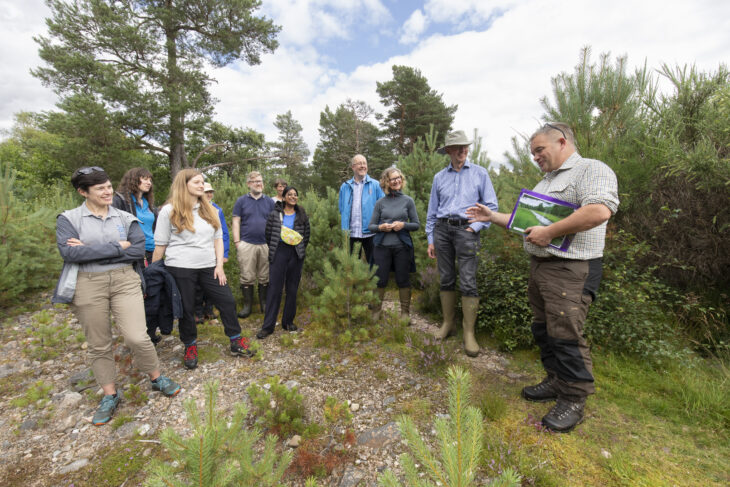
River systems which are allowed to flow along their natural course, and which are supported by a healthy network of riparian woodlands and wetlands, can provide nature-based solutions such as flood and drought mitigation and the prevention of erosion and soil loss. Unlike our heavily modified waterways, natural systems have built-in resilience to the effects of climate change. By re-naturalising our rivers, we can protect the productivity of our land from adverse climate impacts whilst also increasing habitat availability and connectivity for many important species such as the Atlantic salmon, freshwater pearl-mussel and beaver.
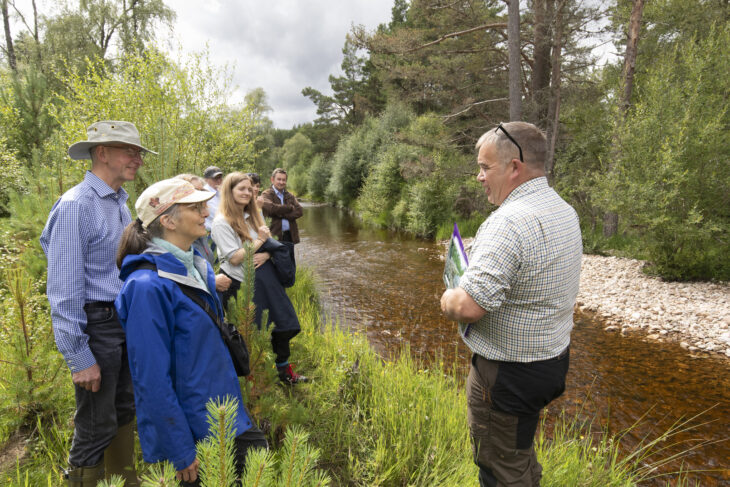
The Allt Lorgy project, 12 years on from its conception in 2012, is a brilliant example of the difference that can be made to a degraded river habitat with a few relatively simple interventions in a relatively short period of time. Deer fencing has allowed the riparian woodland to regenerate well, and the insertion of trees and gravel into the channel has introduced much needed habitat complexity for fish and invertebrates. Juvenile Atlantic salmon numbers in the restored section of the tributary have increased by 400% since the project began and SCI recently received the Scottish Gamekeepers Wild Salmon Conservation Award in recognition of their exceptional efforts to conserve wild salmon.
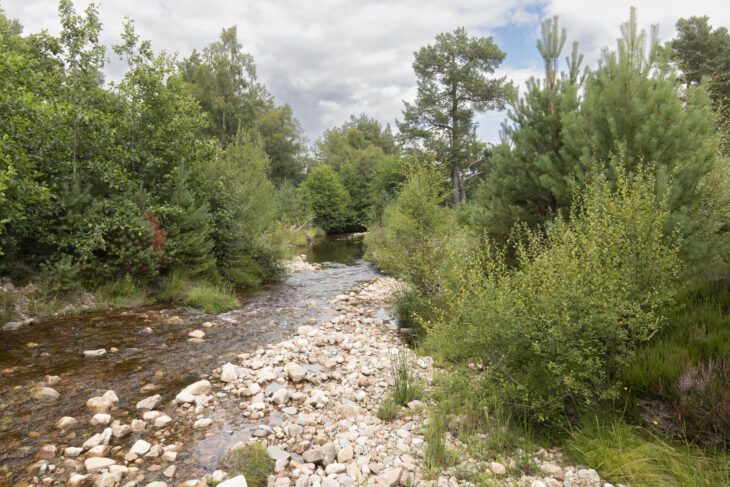
Another species which can not only benefit from riparian habitat creation, but also contribute to the river restoration process, is the beaver. Beavers are ecosystem engineers and can significantly modify habitats to suit their needs. When given the space to carry out their natural behaviour, beavers create wetland habitat mosaics which benefit many other species, including invertebrates, fish and amphibians. These wetlands, and beaver dams themselves, also trap fine sediment, filter diffuse pollution, and can help to moderate high and low stream flows. During the event Grant Moir from Cairngorms NPA talked about the Cairngorms Beaver Project which aims to restore a self-sustaining population of beavers to the Spey and announced that the first kits of the project had just been born. Who knows, perhaps some lucky beavers will find their way to the Allt Lorgy before too long!
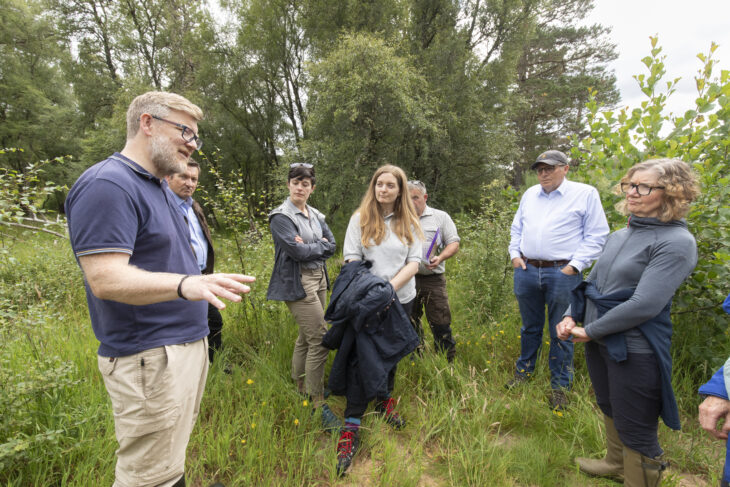
The Trust were lead partners in the Scottish Beaver Trial and we continue to advocate for policy to aid the expansion of the beaver population across Scotland. In heavily managed landscapes the damming and burrowing behaviour of beavers can sometimes be at odds with human land management objectives. Where this is the case landowners who feel unable to accommodate beavers can apply for licences for dam removal, translocation and lethal control. We would like to see more land managers accommodating beavers and the habitat modifications that they make. We believe that key to this is in supporting them to move intensive land management practices back from the watercourse and to make space for the natural flow of rivers and wetlands.
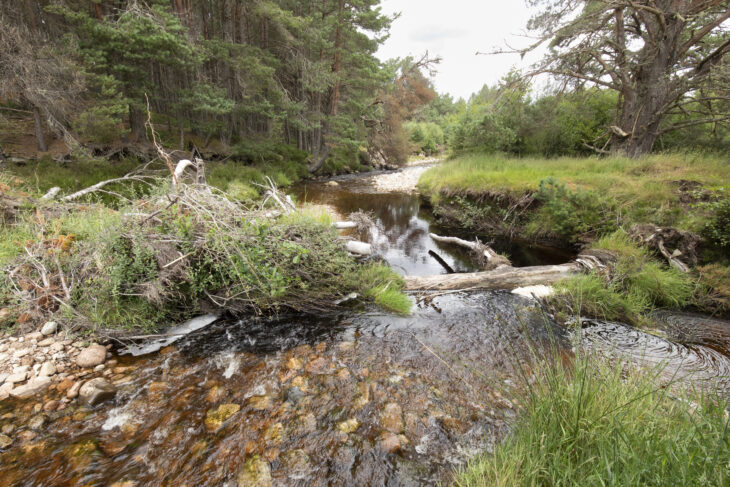
Ultimately, what is needed is a boost to the budget for nature-friendly farming, from both public and private sources. In a landscape which is 75% agricultural, farmers are key stakeholders in the river restoration process, and nature restoration more generally. If we are to reap the benefits that healthy, connected riparian networks can bring to the landscape, more will need to be done to motivate farmers to take up riparian grant options and transition to farming systems which integrate habitat networks, celebrate living alongside keystone species and harness nature-based solutions, for the sustainability of their own farms and for wider public and environmental benefit.
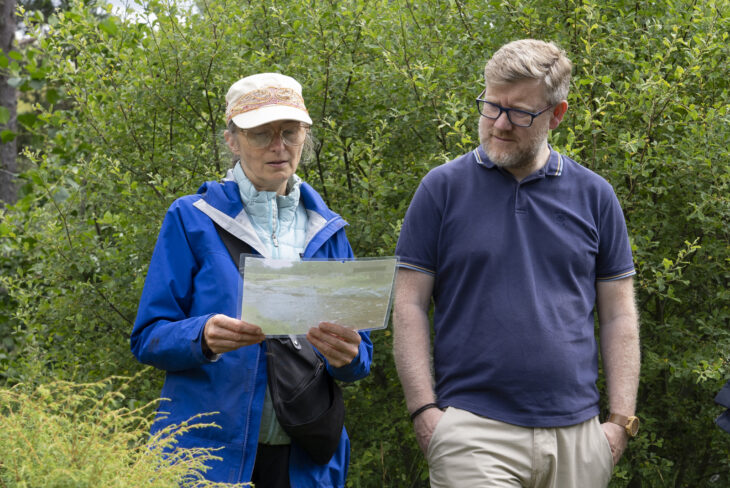
Of course, we couldn’t host a river restoration event without mentioning Riverwoods, a partnership initiative led by the Trust. Riverwoods aims to create a network of thriving riverbank woodlands and healthy river systems across Scotland. The development phase of the Riverwoods Blueprint Project ended earlier this year, and we are currently waiting to hear if we have secured funding from the National Lottery Heritage Fund to take us into the delivery phase of the project.
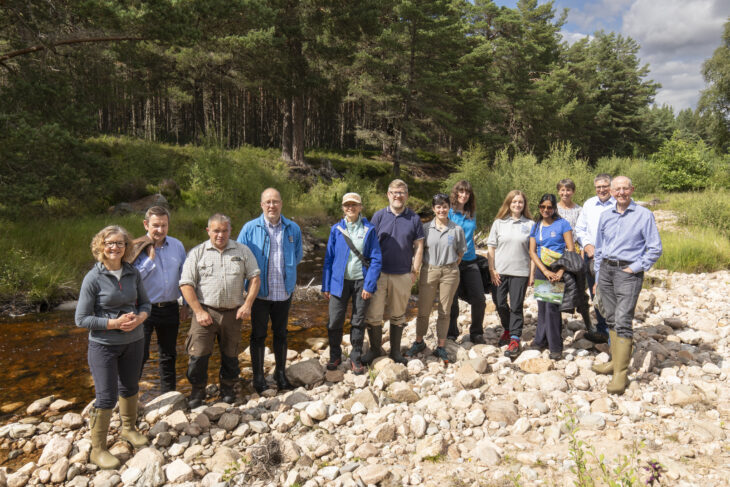
All in all, the visit to Allt Lorgy was a great day out which sparked a lot of interesting and constructive conversation and hopefully left the MSPs with a much better understanding of the importance of restoring and reconnecting river habitats and the multifaceted benefits that doing so can bring for climate, nature, economy and society.
Hazel Forrest
Policy Advisor (Species)
Help protect Scotland’s wildlife
Our work to save Scotland’s wildlife is made possible thanks to the generosity of our members and supporters.
Join today from just £3 a month to help protect the species you love.
Preface
Earlier this month the Trust’s Policy Team organised a visit for MSPs and Local Councillors to the Spey Catchment Initiative (SCI)’s Allt Lorgy River Restoration Project. MSPs Ariane Burgess, Nature …
